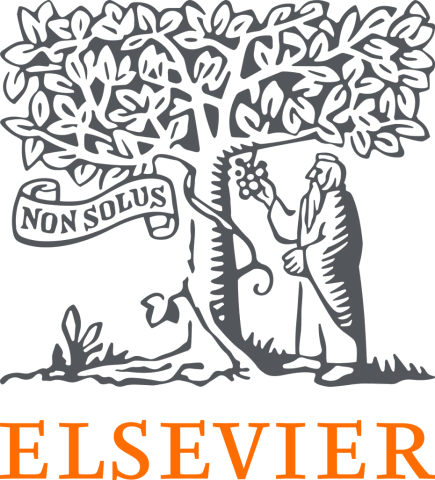
‘Doing human’: ways for researchers to make patients feel comfortable to express themselves
When patient and public involvement is done in an inclusive, safe environment, it results in more relevant, higher-quality health and social care research
Research management
Sponsored by

Elsevier helps researchers and healthcare professionals advance science and improve health outcomes for the benefit of society.
You may also like
Popular resources
During introductions in a research meeting I attended recently, all the professionals were brief, giving their job title, organisation and highlights of professional achievements. The community organisation leaders and members, on the other hand, shared information about their conditions, their treatment and anecdotes about their personal life. This sparked conversation as they swapped stories about their common experiences. The researchers – including me – started having a mini panic as we wondered whether we would ever get through to the “meat” of the agenda.
Eventually, it dawned on us that through this conversation, people were making connections, getting comfortable and addressing the questions that we had prepared.
Involving patients and the public in the design and delivery of health and social care research can improve the relevance and quality of the research and help build trust in the research and its outcomes. It is increasingly a prerequisite to receiving research funding – and more and more often the norm.
- How to facilitate knowledge exchange and build trust with policymakers
- Embracing disagreement in research co-production
- Community-engaged research can give a voice to marginalised people
However, a perennial challenge within the world of patient and public involvement in research is how to effectively include people from a greater diversity of backgrounds. Some researchers have done excellent work reaching out to communities and changing working practices (such as having meetings outside usual work hours) or developing links with community organisations representing people underserved by research.
But once we have people in the room, how do we create an inclusive environment that will keep them there? Something that has struck me in meetings, and in subsequent conversations, with both the public and researchers, is the different worlds that professionals and members of the public often inhabit. I want to make clear that, for the purposes of this article, I exaggerate differences between these worlds and make huge generalisations. And I also recognise that no one falls neatly into a professional or public box.
Where professional and public are worlds apart
Professionals tend to operate in a world characterised by formality and where objectivity and evidence are valued. It is a world of carefully crafted agendas, where we value people expressing themselves succinctly and keeping to the point, a world in which we champion “being professional” – that is, being serious and revealing little about our personal lives.
(Hence, the public contributions to research meetings are often much more interesting and entertaining than the professionals’.)
Clearly, we all tailor our behaviours and how we communicate to a given audience. This is often appropriate and necessary – for example, during a pandemic, no one wants to hear a wisecracking official in a jester’s hat imparting sad news.
However, this environment is alien to many people we want to involve in research. They may be unfamiliar with, and even overawed by, the structure and the formality of the usual research meeting. Being professional can mean that we don’t “do human” well. In everyday conversations, people tend to meander when they speak rather than stick to an agenda. They may want to connect and get to know others before volunteering a view or experience. And how they express themselves can also be quite different. In patient and public involvement, people have lived experience of a condition or a service. They will often be passionate and emotive and want to share their frustrations and other experiences. And sometimes they will laugh and joke to make themselves feel at ease.
Bridging the gap between professional and public
So how do we build bridges between these two worlds? We need to create a safe, inclusive environment in which people feel comfortable to be their authentic selves and express themselves, an environment that encourages us all to “do human” better. Here are my three tips:
Build in time for making connections
Budget permitting, build “getting to know you” meetings or events into your research planning. These could be informal affairs arranged outside the research meeting, or you could include time in meetings for people to get to know each other. For example, allow a longer introductions section on the agenda or have an informal lunch before the meeting starts.
Step outside your professional role
When getting to know each other, researchers could share information about themselves that goes beyond stating role, employer and work-based accomplishments. Talk to each other about hobbies and interests. Swap stories.
Be flexible
Having an agenda, a structure and a purpose are all important, but so is being flexible. Be alert to the flow and dynamic in the meeting. Sometimes it won’t follow the order of your agenda. Don’t panic. Accept that people sometimes hop across themes and issues as they talk on a topic; this is how conversations flow. Allow for a degree of people jumping between topics and agenda points. If people are talking, it’s likely they feel comfortable in expressing themselves. And if they are talking, then you will be achieving your goal of getting people to inform your research.
In an often-grey professional world, it is good to embrace a bit of colour. Bridging this gap between public and professional worlds is so important. It will enable us to create connections, to include people in our research and enable people to feel comfortable in expressing themselves and contributing to research.
Gary Hickey is a senior public involvement manager at the University of Southampton.
If you’d like advice and insight from academics and university staff delivered direct to your inbox each week, sign up for the Campus newsletter.
Research management
Sponsored by


